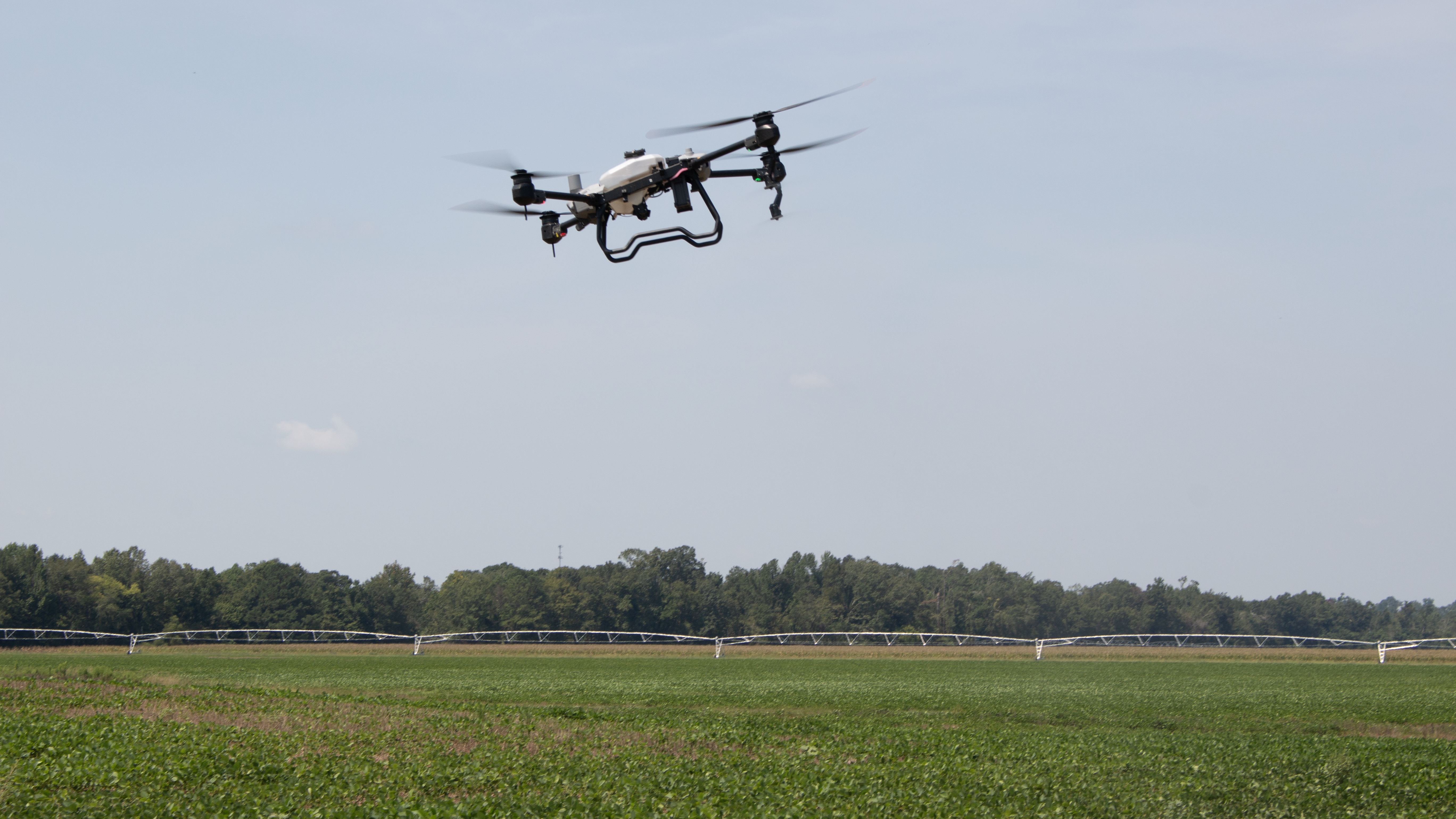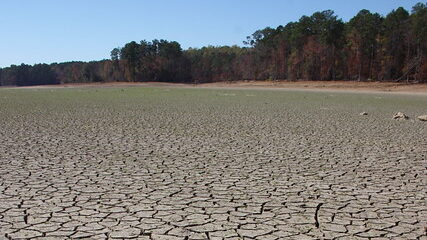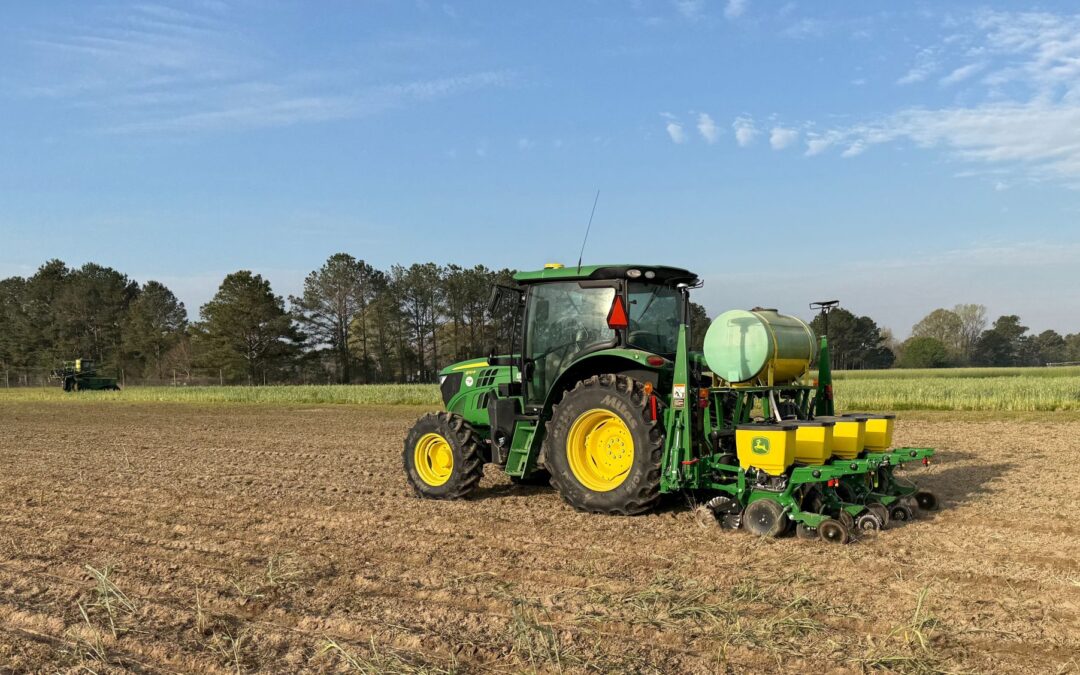While drones were initially used in agriculture primarily for collecting crop and field-condition data, Auburn University researcher Steve Li is leading an effort to explore how the small, remotely piloted aircraft can be used to apply pesticides and other farm chemicals.
The practice already is being used in other parts of the world, accounting for about 30% of the agricultural spraying in South Korea. In addition, 40% of Japan’s rice crop is sprayed using drones. According to the Association for Uncrewed Vehicle Systems International, a nonprofit trade group, agriculture could soon account for 80% of the global commercial drone market.
Drone spraying may be in its infancy in the U.S., but Li sees potential for its use here.
“We began working with drones and precision technologies about three years ago,” said Li, who is an associate professor in the Auburn University College of Agriculture’s Department of Crop, Soil and Environmental Sciences and a weed specialist with the Alabama Cooperative Extension System. He is also a researcher with the Alabama Agricultural Experiment Station.
Li and his team of graduate students now focus on using drones to deliver crop protection chemicals like herbicides, fungicides, insecticides and other chemicals used in farming operations.
“We evaluate the application efficacy of spray drones versus conventional application methods such as airplanes and ground sprayers,” Li said. “We optimize flight and spray parameters of spray drones, and we quantify and mitigate spray drift and balance coverage versus drift.”
The researchers also use drones to identify weed infestations on the ground and then deploy spray drones to spray infested spots precisely to save on herbicide costs and reduce environmental impacts.
Other research projects, Li said, include spreading cover crop seeds and fertilizers aerially with drones.
There are multiple benefits to spraying agricultural fields with a drone, he said.
“Drones allow us to spray a crop when the field is too wet after rains, they can spray small, odd shaped fields better than airplanes and ground sprayers, they handle hilly terrain and terraces very well, and they use much less fuel than ground sprayers and airplanes,” Li said.
Other benefits to drone spraying, he said, is their ease of use—they do not require prior aviation knowledge with fixed wing airplanes or helicopters. Also, they do not cause physical damage to the crop and do not cause soil compaction or create gullies when the soil is wet.
“Drones are much less expensive than ground sprayers and airplanes, the maintenance required is low, they are simple to repair and change parts without special training and knowledge, and it is easy to transport drones on highways, roads and over long distances.”
Drones can be beneficial on both large-scale and smaller farms, Li said, but they may have a niche on small farmers due to the economics involved. Spray drones cost only a fraction of large self-propelled ground sprayers.
While the benefits are numerous, Li’s research also has revealed some limitations to using drones for agricultural spraying.
“Battery life and tank size are still less than ideal and midair collision is always a concern,” he said. “Other disadvantages at the present time include signal loss, forced landings, overheating and equipment depreciation because they are considered electronics.”
Also, there are few makes and models to choose from and not enough training opportunities, he said.
The flagship models of drone agricultural sprayers can cost from $35,000 to $55,000. Thanks to Li and his partnership with Agri Spray Drones, Auburn University was the first land-grant institution in the United States to use the new DJI Agras T40 spray drone in agricultural research.
Li sees hardware limitations and FAA regulations as the two biggest hurdles for farmers hoping to convert from conventional to drone spraying.
“The end goal is not to replace current application methods but to find a reasonable and complementary way to work spray drones into the field management equation.”
As with commercial pesticide applications, Li advises growers to always follow product labels and obtain required licenses from the FAA and state department of agriculture when applying materials with a drone.
Li has received multiple grants for his drone research, including commodity grants from Alabama Farmers Federation check-off dollars, the National Peanut Board and crop protection industry. He recently received the Rittenour Award for Production Agriculture & Forestry Research presented by the Alabama Farmers Federation. The award recognizes Auburn faculty for creative research. He received $10,000 from the Alabama Farmers Agriculture Foundation to continue his drone presentations and on-farm research that has helped farmers across commodities harness innovative technology for crop protection.





